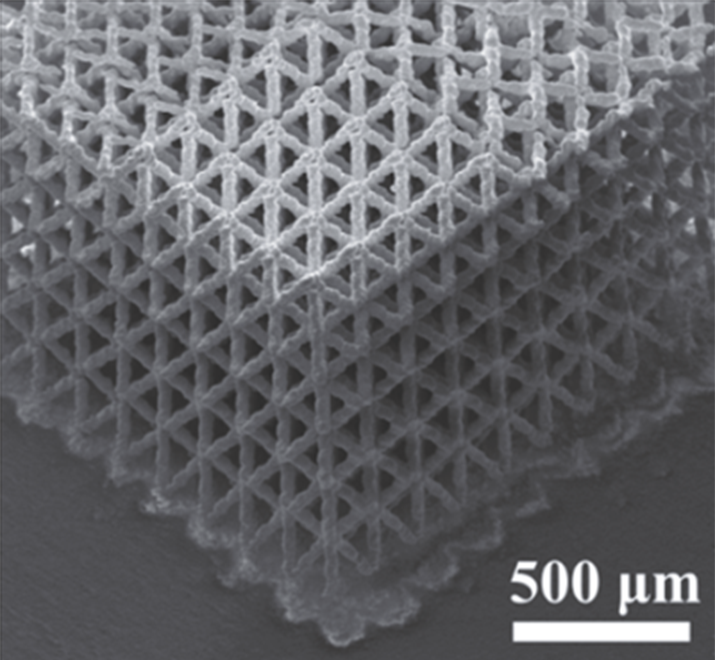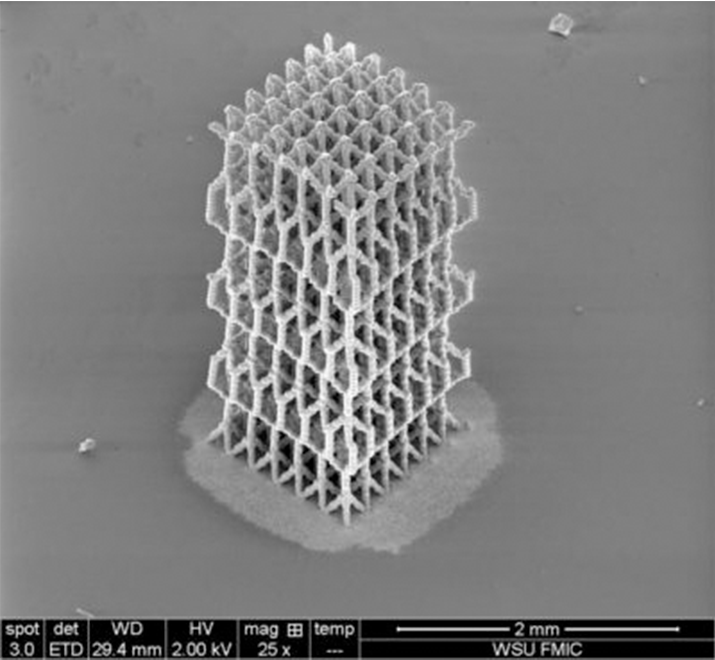Drop by drop: MXene in complex 3D device architectures
3D architectures of MXene can increase the energy storage density of lithium-ion batteries and supercapacitors, and even enhance the performance of existing devices. But there hasn’t been a reliable manufacturing method to build these configurations…until now.
Despite being only a few atoms thick, MXene packs a powerful punch. This class of single layer, two-dimensional (2D) nanomaterials exhibits desirable properties like excellent thermal and electrical conductivity, heat resistance, and high specific surface area. These characteristics promise to revolutionize high-performance electronic devices and energy storage systems.

Source: Rahul Panat
Example of Aerosol Jet 3D printing of 3D architectures
In order to optimize MXene’s properties, researchers need to be able to arrange 2D flakes of it into three-dimensional (3D) configurations. Such 3D architectures of MXene can increase the energy storage density of lithium-ion batteries and supercapacitors, as well as provide performance enhancements to existing devices.
Unfortunately, there is a lack of reliable manufacturing methods available today for building MXene into 3D configurations. With support from a grant from the U.S. Air Force Office of Scientific Research and Clarkson Aerospace, Rahul Panat seeks to change this.
The fabrication process will incorporate Aerosol Jet 3D printing, a nanoscale additive manufacturing technology. Using the principles of droplet dynamics, MXene will be dispersed in liquid and deposited, layer by layer, into stacks of 3D structures to form electrochemical and physical sensors.
“These three-dimensional architectures are useful because they have the potential to ‘gather’ enough nanoscale materials for practical use in electronic devices,” explained Panat, associate professor of mechanical engineering and associate director of the Manufacturing Futures Institute at Carnegie Mellon University.
“If I create an electrode out of the three-dimensional architectures, I can dramatically increase its performance because the chemical and/or biochemical reactions would have a higher surface area and 3D volume for operation.”

Source: Rahul Panat
Example of Aerosol Jet 3D printing of 3D architectures
The research team will test and assess the performance of these devices based on their sensitivity, reproducibility, and repeatability of measurements.
Another aspect of the project looks ahead to the next generation of the American workforce. To prepare a cohort of skilled workers in cutting-edge micro and nanoelectronics technologies, Panat’s team is recruiting U.S. military cadets pursuing undergraduate degrees at Carnegie Mellon University, Duquesne University, and the University of Pittsburgh. Additional trainees include a Ph.D. student and postdoctoral fellows from Panat’s research laboratory.
The trainees will learn 3D printing and other advanced manufacturing methods, plus material characterization techniques such as electron microscopy, X-ray diffraction, and statistical data analysis.
Once they are trained in the range of 3D printing techniques, the U.S. Air Force, Army, and Navy cadets will be able to repair mechanical components and electronic circuits directly in the field. This will reduce reliance on outsourcing and supply chains that are susceptible to severe disruption by global events. This component of the grant aims to strengthen the preparedness of the nation’s defense.
Although the research is fundamental in nature, Panat anticipates that it will start to impact industry in five to seven years. As the technology is further developed, new, high-performance electronic devices will emerge.
The grant is for $456,000 over two years.
